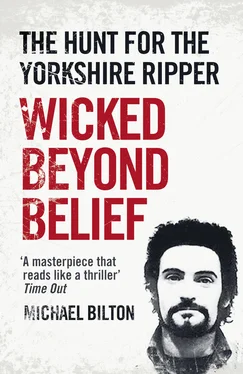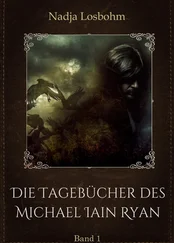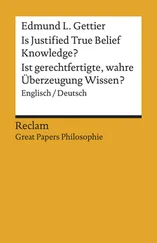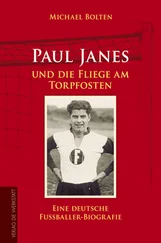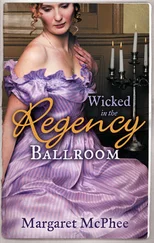During the next three months the ninety officers investigating Atkinson’s murder made 2,300 house-to-house inquiries and 1,924 vehicle checks; completed 3,915 separate actions and took 2,161 statements. All to no avail.
Several years later Domaille ended his police career as an assistant chief constable in the West Yorkshire force. He then had a spell working for the Security Service, MI5. Now long into retirement and living in his native West Country in a town on the edge of Dartmoor, he still feels frustration and passion in equal measures about the Atkinson inquiry: ‘The only thing wrong with the inquiry was the bloody leader of the investigation – me – didn’t catch the man! What can I tell you? I tried and my team bloody tried.’
Four brutal murders and still no conceivable sign of the police catching the man responsible. News of the police investigation was now national headlines, covered extensively in the press and on radio and television. Sunday newspapers dispatched feature writers to Leeds to prepare in-depth stories. The London Weekend Television channel sent its ‘Weekend World’ team to the North to report on what it saw as a compelling story deserving in-depth analysis.
The pressure to solve these homicides was now firmly on George Oldfield and his men. It was the worst kind of professional nightmare for a senior detective. A sadistic maniac was randomly choosing vulnerable women as his prey and then callously slaughtering them. There was no motive as such, only the inner compulsions of a sick and twisted mind wielding a murder weapon. The only connection between the victims was that they were all women down on their luck with absolutely no relationship to the murderer. He appeared to have a burning inner desire to kill loose women. So far the Ripper had made fourteen children motherless, one of the few elements of the media coverage which registered in any emotional sense with the general public. That the victims were all prostitutes seemed to count against them in the public mind. While there could be sympathy for the children they left behind, their mothers received very little simply because of their active role in the oldest profession.
It was even harder for the various murder squads dealing with the separate homicides to persuade the victims’ various clients to come forward so they could be eliminated. Most men naturally feared exposure as clients of streetwalkers. A knock on the door and awkward questions from a police officer inquiring why a particular individual was in the red-light area on a given night would be understandably unwelcome in either the marital home or the workplace. The fact that the victims were selling sex ensured there was no sense of urgency among the public in seeing the killer apprehended. While the compassionate might sympathize with women forced to go on the streets, others with sterner views saw it as a sordid activity and had little empathy. The law-abiding citizens of Leeds and Bradford might have eagerly come forward with potential evidence if an elderly woman or schoolgirl had been murdered. But in the case of the Ripper victims they hung back. Senior investigating officers had to think of ways of keeping the story in the public eye in the hope of jogging a potential witness’s memory. In the red-light areas prostitutes frequented in Leeds and Bradford, actual witnesses seemed few and far between.
Yet again the local police exhausted all the tried and tested methods of solving murders. Yet again there were precious few clues. The only positive evidence was the tyre tracks found in Roundhay Park during the Richardson slaying. The team eliminating all the vehicles in West Yorkshire that could have left such tyre marks continued their foot-slogging work. Thousands and thousands of vehicles were being screened. But such huge and painstaking inquiries brought no returns and it was never easy trying to maintain morale among those given the day-to-day tasks of relentless door knocking.
Each detective taking part in this kind of inquiry has to live with the knowledge that a single false move, a question forgotten, a momentary loss of concentration, might eliminate the killer, passing over the real culprit and rendering the whole exercise futile. Such an error would leave the inquiry team working in vain, without knowing their quarry had already escaped the net. For the conscientious officer wanting to do everything he can to catch a killer, the strain of possibly making such a mistake must be enormous.
The easiest vehicles to screen in the tyre inquiry were done quickly. People who had not moved home and had kept their vehicle since the time of the Richardson murder could be seen and eliminated reasonably swiftly. It was thought unlikely that an owner would have changed all four tyres. The remaining unseen vehicles proved gradually more and more difficult to eliminate. The vehicle may have been sold, scrapped or abandoned. Each generated new lines of inquiry for the beleaguered force. Where someone said they no longer had the car, its current whereabouts had to be checked. There was also a critical need to keep the reason for the tyre operation top secret in case the killer realized the vehicle he owned might trap him. The tyres might be changed and dumped, or the vehicle crushed and turned into a three-foot cube of metal. Hobson’s ‘tracking’ inquiry moved past the half-way stage and before midsummer 1977 more than 30,000 vehicles had been seen. For the Leeds murder squad under Hobson’s command, it seemed the best chance they had of catching the killer – providing he still had his car with him.
The process of recording who had been seen in relation to the Richardson tyre inquiry involved indexing vehicle makes and registration numbers on special cards, but with no separate name index of vehicle owners who had cars with tyres which could have matched those left at the Richardson crime scene. Although Peter Sutcliffe was the owner of one of the vehicles on Hobson’s vast list of over 50,000 potential suspects, his name as yet figured nowhere within the incident room card index system – though a record of the vehicle he owned had yet to be eliminated from the tyre inquiry. If Sutcliffe’s name should arise in connection with some other aspect of the inquiry, no one would be able to tell he had been on the list of potential suspects for the Richardson murder. There were still separate incident rooms for each of the four murders. With no computers available to handle the ever-expanding number of inquiries or the information they produced, the various incident rooms relied on the paper-led system: the keeping of various indexes relating to different aspects of the inquiry and the taking of statements – lots of them. It all took time and manpower.
In any area of Britain the number of police officers and their supervisors is a scarce resource. Precisely how much manpower was needed to devote to a ‘tracking’ inquiry that covered the whole geographical area of West Yorkshire as well as Harrogate in North Yorkshire was highly questionable. The normal pace of life in the region continued unabated, which meant other crimes also had to be tackled. Prostitute victims or not, the existence of a multiple murderer operating in the Leeds and Bradford area raised the stakes for a force CID already burdened with an average twenty-six murders to investigate every year, along with armed robberies, rapes, and sexual assaults as well as routine burglaries and vehicle crimes. Altogether in 1977 West Yorkshire Police had 128,000 crimes reported, including 5,000 crimes of violence. Roughly half these crimes were being solved.
Responsibility for not simply doing something, but being seen to do something rested ultimately with Oldfield’s boss: the chief constable, Ronald Gregory. As chief, he had total autonomy to run the operational side of the force as he thought fit. In legal terms, he alone had ‘direction and control’ of his force. As long as he carried out this task ‘efficiently’ within the terms of the 1964 Police Act, no one could tell him what to do. By tradition and by statute chief constables are independent office holders, a key feature of British democracy. A local police authority or watch committee could oversee the work of the police, but they couldn’t tell the chief constable what to do. The task of overseeing the efficiency of police forces rested with the Inspectors of Constabulary, who reported back to the Home Secretary. For generations in Britain this general rule for the well-ordered preservation of the public good had been observed: no one wanted politicians telling police officers who they could or couldn’t arrest. In 1968, Lord Denning, Master of the Rolls, made the legal position of chief constables clear: ‘No Minister of the Crown can tell him that he must or must not keep observation on this place or that; or that he must not prosecute this man or that one. Nor can any Police Authority tell him so. The responsibility of law enforcement lies on him. He is answerable to the law alone.’
Читать дальше
